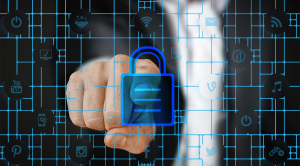How to Get Free WiFi Everywhere in 2023
Surely all of us have experienced that annoying situation: when we need to use Wi-Fi to send a message, find an address, or simply want to check our email, but realize that there is no connection. connect. However, don't worry too much! There are many means to access Wi-Fi without incurring a cost. Let's learn six simple ways you can apply the next time you need an urgent Internet connection. At the same time, don't forget that preparing in advance by exploring options at home is always a wise decision when you need a reliable connection. As the proverb says, "Dig a well before you're thirsty."
1. Find a location with public Wi-Fi
Free Wi-Fi hotspots are not limited to public libraries, but also extend to many other locations serving remote students and workers. For example, some night trains and public buses offer free Wi-Fi, and creating an email log is a convenient solution to access when needed.
Places like gyms can also be Wi-Fi sources, often requiring a login for security. Universities usually provide free Wi-Fi, although a password may be required from the administrator. Museums are another option, which offer free Wi-Fi when you sign up for their newsletter or email subscription.
Public malls, tourist attractions, and shopping locations also often have free public Wi-Fi, although using a VPN is a safe bet due to the increased risk of cyberattacks. Hotels and motels are another option, with lobbies often known to offer free Wi-Fi, attracting tourists and business travelers. Don't forget to use VPN when connecting to ensure information security.
2. Use the app to find a Wi-Fi hotspot
Enhance your search with the help of free apps or websites that can locate nearby Wi-Fi hotspots. These handy programs can even provide passwords for certain networks. Just note that you need an Internet connection to use them.
3. Find hidden Wi-Fi networks nearby
Coffee shops, restaurants and even public places sometimes hide the SSIDs of wireless networks, making them difficult to find. However, there are some apps like NetSpot specifically designed to help identify hidden Wi-Fi networks, some of which can be used for free. Thanks to such tools, finding and connecting to Wi-Fi networks that are not easily visible becomes more convenient, opening up more opportunities to access the Internet when you need it.
4. Turn your phone into a Wi-Fi hotspot
Did you know that your device is more than just a tool for connecting to the world, it can also turn into a Wi-Fi hotspot, using your mobile data connection?
For iOS users, you can do the following:
1.Open Settings and select Personal Hotspot.
2.Set a password and tap "Allow others to join."
Android users can take the following steps:
1.Open Settings and select Wireless & Networks.
2.Find Tethering & Portable Hotspot, then tap Portable Wi-Fi Hotspot.
3.Set a password and enable the Portable Wi-Fi Hotspot option.
After completing these steps, you can connect other devices to your own Wi-Fi network. However, please note that browsing and streaming speeds may be a bit slower.
5. Get a portable router
An alternative is to use a portable router, also known as pocket Wi-Fi. This is a popular small device, especially popular with tourists and businessmen. You can pre-pay for data and conveniently top up via credit card while on the go. Using a mobile router is easy, just keep the device nearby and connect to it via your phone, similar to how you would connect to any other Wi-Fi network.
Mobile routers provide impressive Internet speeds, and compared to unsecured public Wi-Fi networks, they often offer a higher level of security. Connecting to a mobile router ensures a more secure and reliable browsing experience.
6. Use USB Wi-Fi
A USB Wi-Fi dongle, also commonly known as an internet stick, is a portable modem that allows you to connect to a 3G, 4G or 5G network by plugging it into the USB port of your laptop or desktop computer. The amount of data available to you depends on the specific plan you are subscribed to.
How to get free Wi-Fi at home?
Checking for an extended Wi-Fi network from your Internet service provider (ISP) can be a useful option. Depending on your location, various ISPs like AT&T, Comcast, and Spectrum may offer free Wi-Fi hotspots to their customers in many major cities in the United States. This means you should contact your ISP to inquire about the availability of such networks in your neighborhood.
Another way to achieve free Wi-Fi at home is to use a high-gain antenna combined with a wireless adapter. This way, you can establish an Internet connection without incurring additional costs. However, it should be noted that this method may require a higher technical level than the previously mentioned methods.
Secure your public Wi-Fi connection
To ensure the security of your public Wi-Fi connection, follow these guidelines:
1.Use a VPN (Virtual Private Network): The most effective method to protect your public Wi-Fi connection is to use a VPN. This technology creates an encrypted tunnel, helping your Internet traffic pass through a secure channel, making it difficult for those with intent to intercept or access your personal information. bad things.
2.Only connect to secure Wi-Fi networks: To minimize security risks, connect only to Wi-Fi networks that are known to be secure. Avoid connecting to unfamiliar or untrusted networks, to prevent potential threats.
There are many diverse Wi-Fi security risks, from packet sniffing, fake Wi-Fi networks to man-in-the-middle attacks. However, with the implementation of a VPN and connecting only to secure networks, you can significantly increase the security of your public Wi-Fi connection, while ensuring privacy and information protection. your personal.










